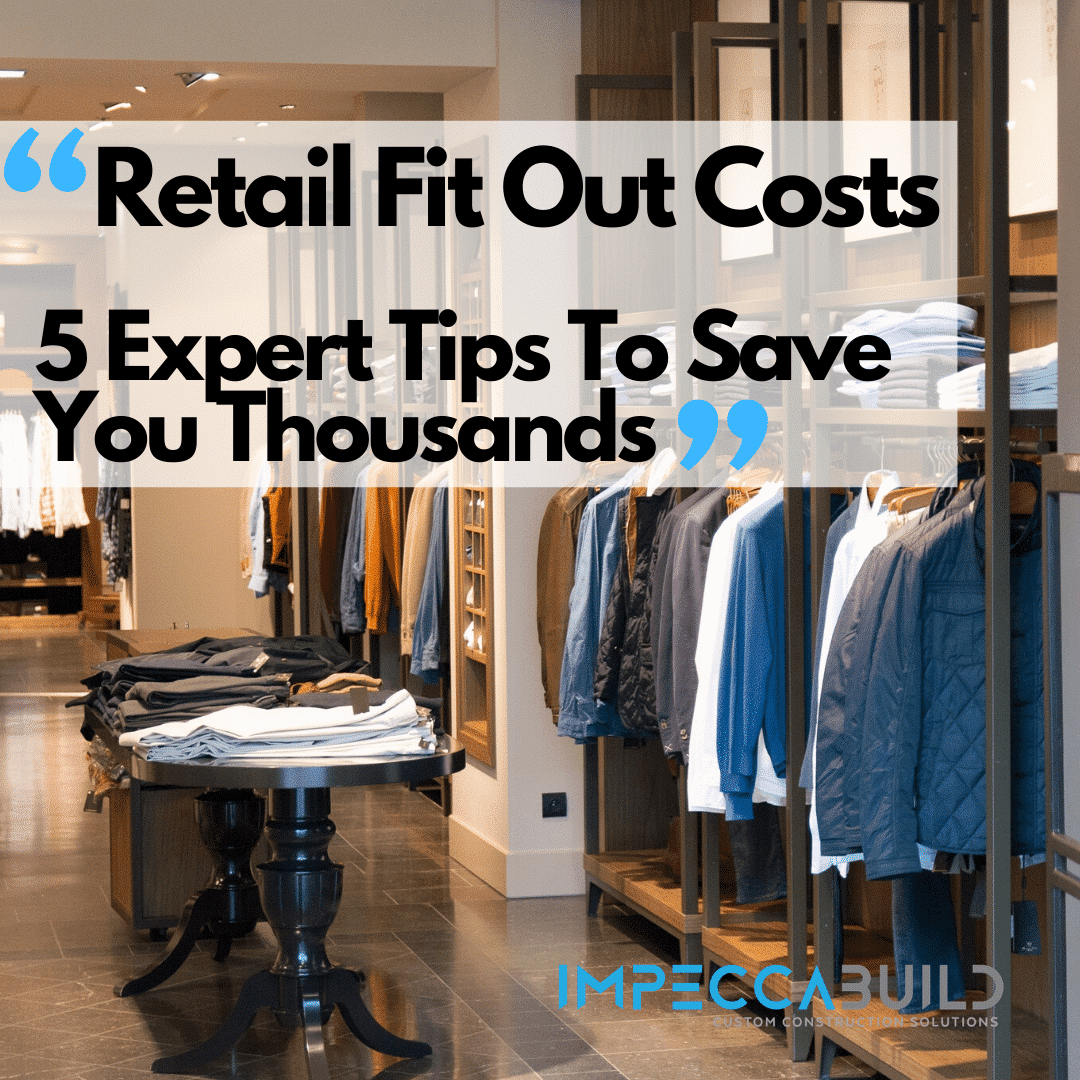Planning Your Store Fit Out: What You Need to Know

When it comes to managing a thriving retail business, the design of your store can measure the difference. A well-designed retail fit out not only enhances the look of your environment but further plays a critical role in fostering an immersive shopping environment for your customers. Recognizing what a retail fit out entails and its value for your enterprise is the key first move in making knowledgeable decisions about your retail layout.
In this article, we will examine the essential aspects of budgeting for your retail fit out. Starting with comprehending the financial aspects to directing the development and design phases, we aim to provide you with the knowledge you need to ensure your fit out meets your business goals without stretching your finances. Whether you are building from the ground up or updating an existing space, the tips shared in this article will lead you through the process from idea to completion.
Grasping Retail Store Interiors
Store fit-outs refer to the method of designing a interior space for a store setting that effectively highlights items and interacts with customers. This involves not just the physical construction or renovation of the space, but also the design elements that contribute to a cohesive brand experience. A carefully crafted fit-out enhances the usability of the space, permitting both staff and customers to interact with merchandise in a meaningful way.
The value of a retail fit-out cannot be overstated, as it plays a crucial role in drawing in customers and shaping their purchasing decisions. An appealing and effectively planned retail space is vital for imparting a favorable first impression and fostering brand loyalty. By carefully considering elements like arrangement, illumination, and furnishings, businesses can greatly elevate the total shopping experience, ultimately leading to greater sales.
As consumer needs change, the design of retail fit-outs must incorporate current trends and technologies. Staying aware about current trends and outdated styles helps retailers create environments that are simultaneously practical but also appeal with their customer base. A carefully planned retail fit-out can turn a simple shopping trip into an pleasurable experience, making customers repeatedly visiting. spintax # Managing Your Fitting-Out Budget
As you approach managing your fit-out budget, the first step is to develop a clear and practical financial plan. Begin by enumerating the original source of your retail fit-out, including site work, interior design, furnishings, branding signs, and tech solutions. This holistic approach will help you avoid overlooking essential elements, which can lead to additional costs later on. It is crucial to consult with professionals who understand the market rates for materials and services to create a reliable budget.
Afterward, prioritize your spending based on what will provide the most significant return on investment. Allocate funds to areas that enhance customer experience and drive sales, such as layout optimization, illumination, and brand identity features. It's crucial to be adaptive and prepare for contingencies in your budget, as unexpected expenses can arise during the fit-out process. Reserving a portion of your budget for unforeseen costs can help ensure that your project remains on schedule without monetary pressure.
In conclusion, maintain open communication with your contractors and designers throughout the fit-out process. Consistent meetings can help you stay informed about the status and any financial adjustments needed. By fostering this partnership atmosphere, you can address possible issues quickly and make well-considered decisions that align with your budgetary constraints. This proactive approach will enable you to manage your retail fit-out budget efficiently while achieving your vision for your store.
Forward-thinking Layout Strategies

Creating a captivating retail fit-out requires novel design strategies that not just attract customers and also improve their shopping experience. One effective approach is to introduce versatile layouts that can be readily modified to suit different products, promotions, or seasonal changes. This adaptability allows retailers to keep their space new and engaging, ensuring that customers always find something and appealing each time they visit.
A further strategy includes the mindful use of technology inside the store. Integrating smart mirrors, interactive displays, or augmented reality experiences can create an engaging environment that motivates customers to explore products in novel ways. By capitalizing on technology, retailers can provide more information and entertainment, which further enriches the customer experience and potentially boost sales.
Finally, sustainability should play a key role in the layout strategy. Using eco-friendly materials, energy-efficient lighting, and design elements that promote a connection to nature can resonate with eco conscious consumers. This not just aligns with contemporary retail fit-out trends but also establishes the brand as socially responsible, enhancing customer loyalty and attracting a wider audience.
